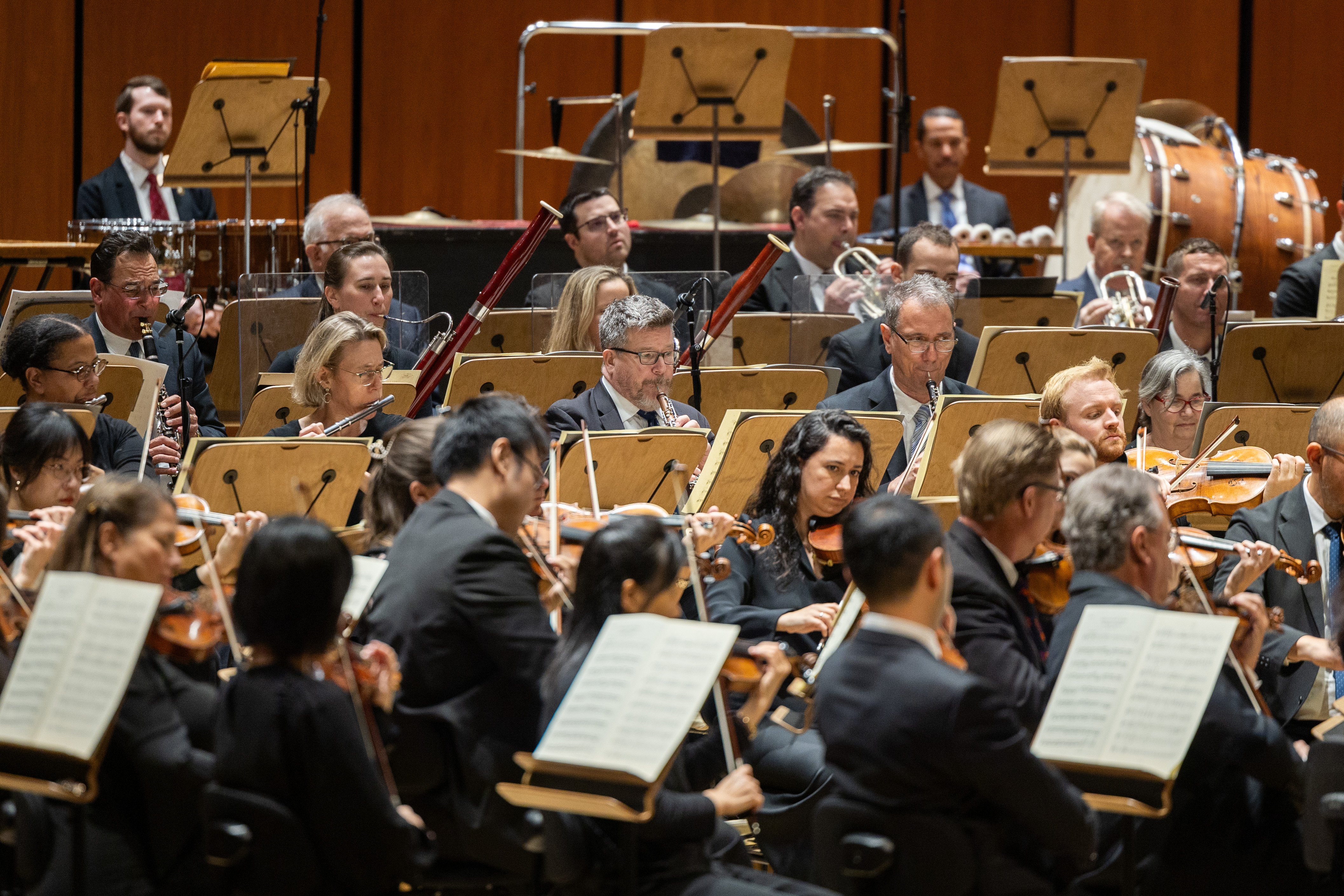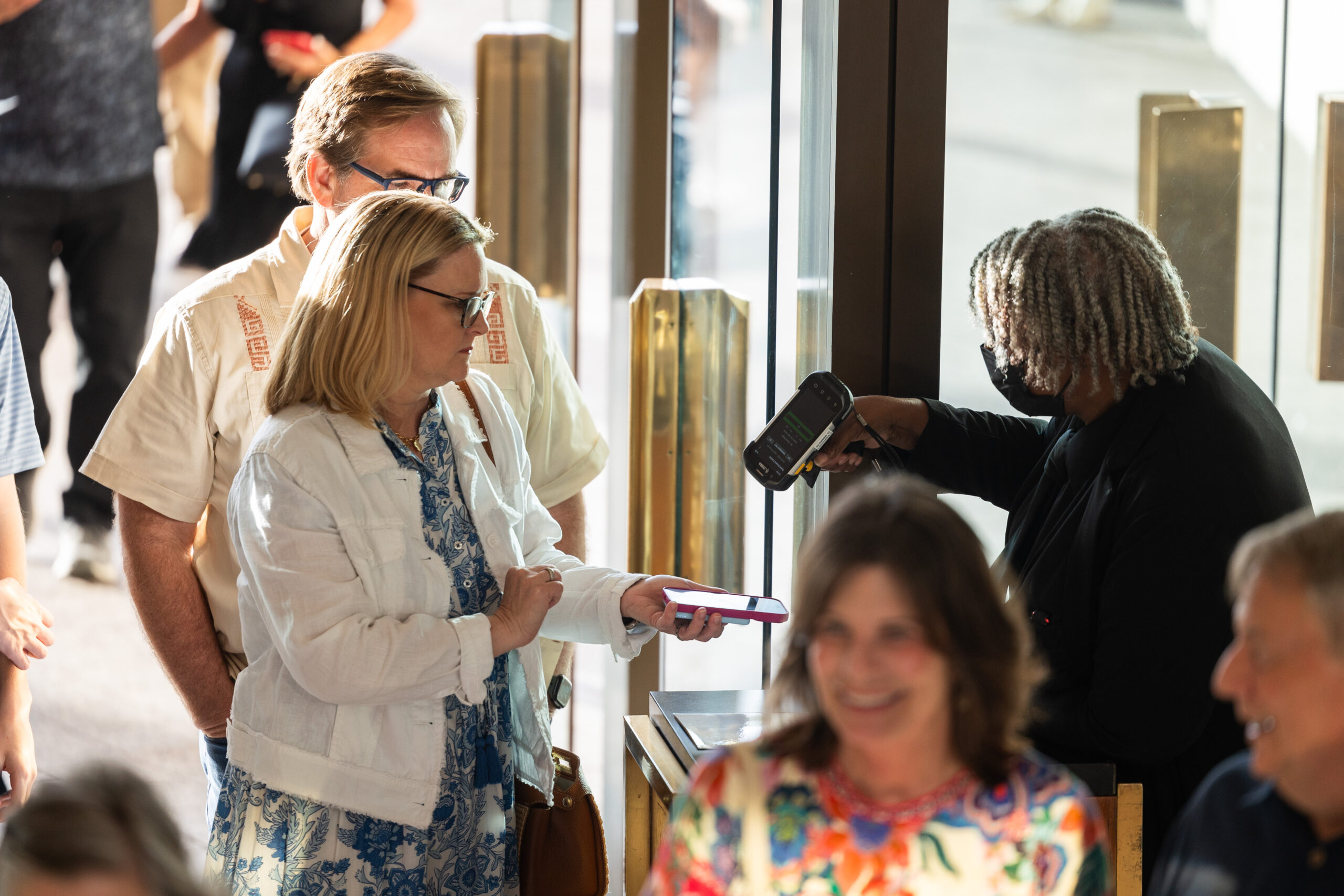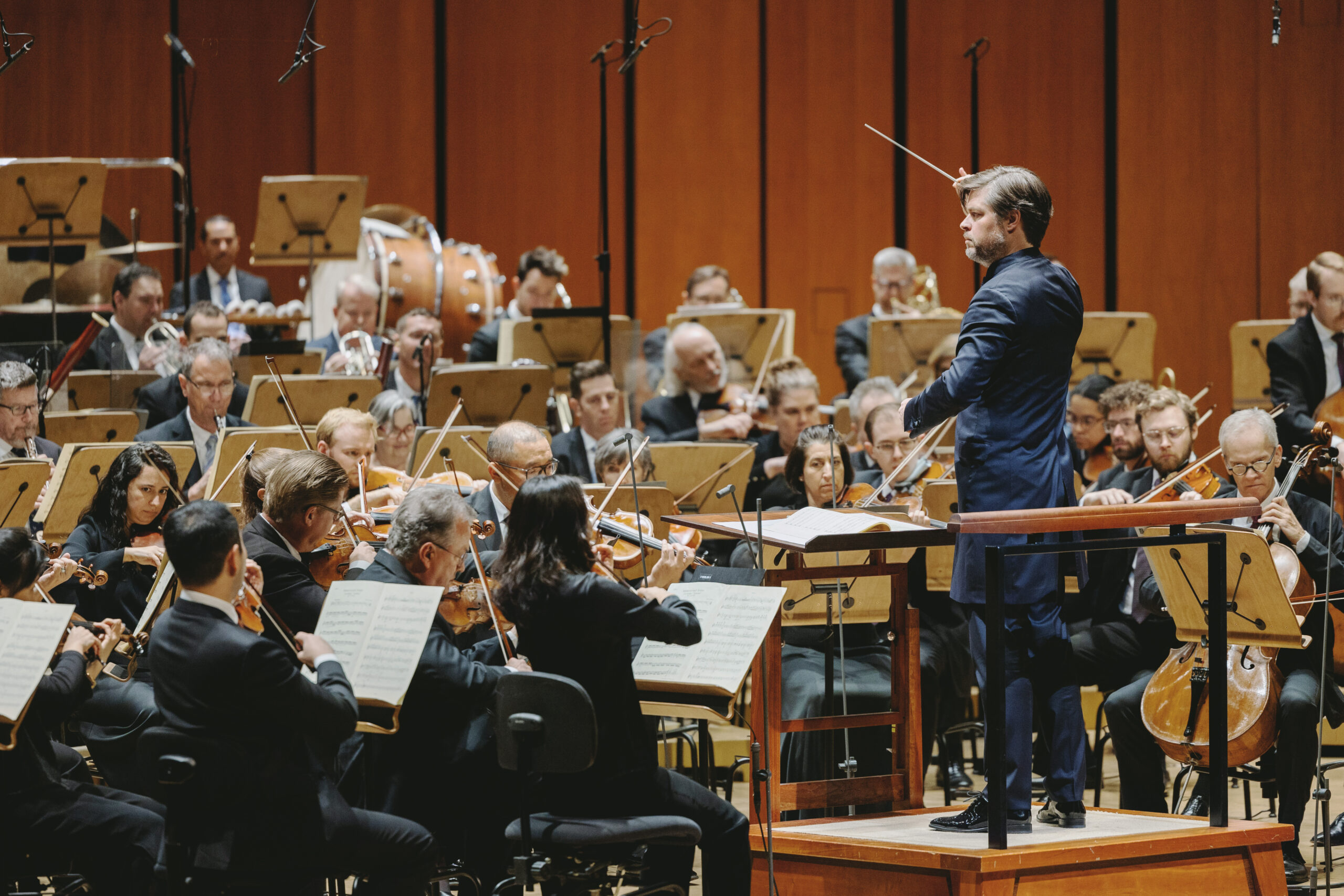
March 30, 2018
That Existential Feeling: Strauss’ Thus Spake Zarathustra
According to his novelist friend Romain Rolland, Richard Strauss once quipped that “In music one can say everything. People won’t understand you.” Strauss’ characteristically humorous remark seems particularly applicable to Also sprach Zarathustra (Thus Spake Zarathustra), one of his best known yet most misunderstood works. Ever since Stanley Kubrick used it to score a cosmic sunrise and the evolution of technology and war in his 1968 film 2001: A Space Odyssey, its iconic opening has become a symbol of bombastic affirmation, used by Elvis Presley as well as countless advertisers and satirists.
Thus Spake Nietzsche
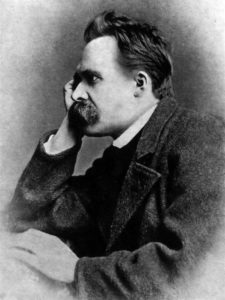
Strauss’ piece, however, goes on for another half-hour. It was originally inspired by Nietzsche’s far less familiar book of the same name, which is perhaps most famous for including the infamous (and widely misunderstood) declaration that “God is dead.” Nietzsche’s Also sprach Zarathustra is a philosophical novel about a fictionalized Zarathustra (the historical Zarathustra founded the religion of Zoroastrianism). Nietzsche’s Zarathustra is essentially a raisonneur for his own philosophy, which addresses the crisis of values that faced European society as the advance of science led people to doubt traditional religions and cultural norms. Subtitled “A Book for Everyone and No One,” Also sprach Zarathustra was Nietzsche’s own very personal response to this crisis. It is as if he wanted to create his own sacred (or rather, anti-sacred) text that would express his beliefs.
Unusually for a work of philosophy, Nietzsche’s Also sprach Zarathustra is just as much a prose poem as a philosophical text; indeed Nietzsche, who was an amateur composer himself, said the book was in fact a “symphony.” Written in a pseudo-biblical style, it contains many cryptic aphorisms whose meanings are intentionally vague and poetic. Like the Analects of Confucius and other ancient texts, Also sprach Zarathustra is meant to be worked through and puzzled over. Each reader comes away with a highly subjective interpretation of what the book means, making a summary difficult. Nietzsche himself would follow Zarathustra with several more books that attempted to explain it.
Perhaps its main idea is that humans should embrace life, nature, the body and material existence, with all its pleasures and pains, rather than seek for a spiritual world beyond or afterlife. Its optimistic but challenging message is that life, even with all its suffering, is fundamentally worth living for its own sake, and that we should live accordingly.
Genesis
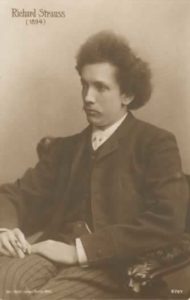
Though the initial idea for Also sprach Zarathustra may have originated a few years before, Strauss began serious work on it in February 1896, composing the bulk of it in the summer while staying in the Austro-Italian Dolomites. At 32, he was already widely regarded as the leading German composer of the day, Wagner’s musical heir and a controversial modernist bad boy. Nietzsche himself was still alive, although he had long since gone insane (likely as a result of tertiary syphilis).
Many artists and composers were influenced by Nietzsche’s Also sprach Zarathustra, but few took Nietzsche’s philosophy to heart to the degree that Strauss did. Premiered within months of its completion, the work’s opulent orchestrations, complex textures, daring harmonies and controversial subject matter provoked equally intense criticism and applause.
Strauss originally gave the work the cheeky subtitle “Symphonic optimism in fin de siècle form, dedicated to the twentieth century,” but replaced it with the tamer “freely after Nietzsche” before publication. He named the sections of his piece after different chapters in Nietzsche’s book, but needless to say, it was impossible to clearly translate Nietzsche’s abstract text into the equally abstract medium of instrumental music (as his critics were wont to point out). After consulting with Strauss, the writer Arthur Hahn published a lengthy explanation of the piece (in a typically mercenary move, Strauss actually suppressed the movement titles at the premiere so audience members would be forced to buy Hahn’s pamphlet if they wanted to know what the music was about), but perhaps the clearest, most concise explanation he gave of the work is reported once again by Romain Rolland: “in his mind, he really did want to express […] the hero’s inability to satisfy himself, either with religion or science or humor, when confronted by the enigma of nature.” Using ideas and images from Nietzsche’s book, the piece represents the quest to find what is popularly called “the meaning of life” when confronted by an indifferent, uncaring natural world and humanity’s own corporeal, animal existence.
The Music
Kubrick was not too far off the mark in using the piece’s opening to score a sunrise from outer space; Strauss indeed intended it to depict the mountaintop sunrise that opens Nietzsche’s book. The opening motif in the trumpets has been called the “nature” or “world riddle” motif; it recurs throughout the piece as a symbol of nature’s indifference and mystery:
https://www.youtube.com/watch?v=40e7mqtWwcs
After the emphatic opening, the next section is titled “Von den Hinterweltlern.” “Hinterweltlern” is an untranslatable Nietzschean neologism. “Hinter” can be translated as “after,” “back,” or “behind”; “welt” is “world”; and the “-lern” suffix indicates people of the “Hinterwelt.” The corresponding chapter in Nietzsche’s book discusses the reasons people yearn for religious faith or a belief in an ideal “world beyond”; essentially he says the suffering and imperfections of life cause people to yearn for this. Out of dark, fragmentary ideas low in the orchestra emerges a horn call, which Strauss labeled with the words “Credo in unum deum” (Latin for “I believe in one God,” a phrase from the Roman Catholic mass). The horn is answered by a hymn-like melody that is brilliantly orchestrated for divisi strings. It begins softly, but grows in intensity, representing humankind’s yearning for a perfect, heavenly, spiritual alternative to nature.

The next section, Von der großen Sehnsucht (Of Great Longing), is essentially transitional and begins as the hymn-melody subsides. The World Riddle/Nature motif reappears, disturbing the increasingly fragmentary hymn melody. This struggle between faith and nature crescendos as upward-thrusting motifs rumble from the depths of the orchestra, leading to the next section: Von den Freuden und Leidenschaften (Of Joys and Passions). An intense, passionate melody appears in the violins over a turbulent orchestral accompaniment. This represents humanity’s natural, animal passions, which Nietzsche argues should be embraced: “Inexpressible and nameless is that which is torment and delight to my soul and is even the hunger of my entrails too.”
These joys and passions soon collapse, however, leading to another transitional section: Das Grablied (The Grave Song). The corresponding chapter of Nietzsche’s book is not so much a meditation on death as a lament for lost “visions and apparitions” of youth. Musically, this is not a dirge or funeral march, but a decrescendo leading to the next section: Von der Wissenschaft (Of Science). This section begins quietly in the cellos and basses with a strange, chromatic melody. Its first three notes actually consist of the Nature/World Riddle motif, perhaps suggesting the scientific quest to understand the natural world. This theme becomes the subject of a fugue (the most learned of musical forms) as more instruments enter.
This heavy, gloomy atmosphere is suddenly dispelled by light, high, cheerful music commonly interpreted as Zarathustra’s laughter; Nietzsche did not believe that science, with its methodical quest to understand nature, could provide the metaphysical knowledge he sought. The World Riddle/Nature motif, however, soon challenges the laughter. After an emotional outburst, the next section, Der Genesende (The Convalescent) begins with an energetic resumption of the science fugue, which builds in intensity until the World Riddle/Nature motif makes a climactic, powerful return in the full orchestra; it seems that nature is ultimately greater than human knowledge.
A long, gradual crescendo full of strange orchestral effects ensues, featuring fragments of the Zarathustra’s laughter melody. This leads to the next section, Das Tanzlied (The Dance Song) in which music based on the Nature/World Riddle motif gives way to a solo violin waltz. This is not a Viennese waltz from a glittering ballroom, however, but its more rustic Bavarian cousin. Indeed, the accompaniment contains the World Riddle/Nature motif, suggesting that the waltz represents humankind in harmony with nature. Though this waltz has struck some critics as anticlimactic, its lighthearted character is completely in keeping with Nietzsche’s philosophy; throughout Also sprach Zarathustra, Nietzsche praises “lightness” and describes Zarathustra as a dancer, suggesting that humanity should strive for a similar lighthearted affirmation of life and nature. Throughout the waltz, themes from earlier in the work reappear (such as the Joys and Passions melody).
The waltz builds to a passionate, but ultimately unstable climax that collapses with twelve strokes of a bell to signal midnight and the transition to the final section of the piece, the Nachtwandlerlied (Night Wanderer Song). This essentially serves as a long decrescendo to the piece’s famous question-mark ending: flutes, oboes, harps and violins come to rest on a B major chord, but the cellos and double basses repeat a dissonant, unresolved C natural. Strauss explained that “C major is Nature, Man as being; B minor (at the end of the work B major) his metaphysical aspiration,” suggesting that ultimately the World Riddle remains unsolved. —Calvin Dotsey
Don’t miss Strauss’s Also sprach Zarathustra on April 26, 28 & 29, 2018! Get tickets and more information at houstonsymphony.org.




